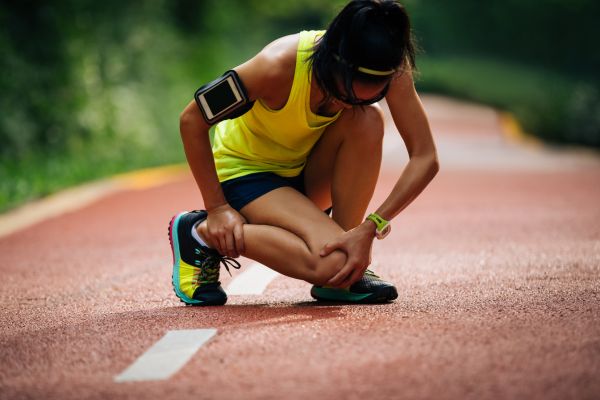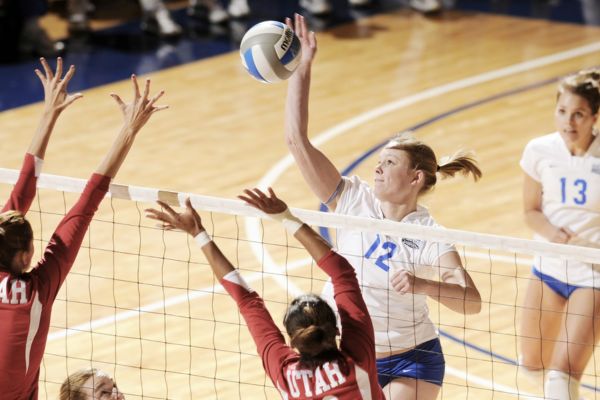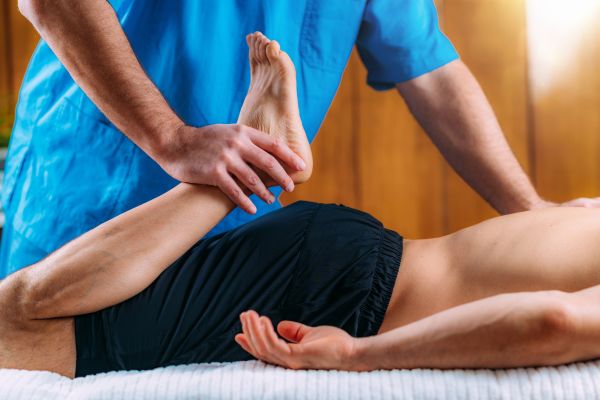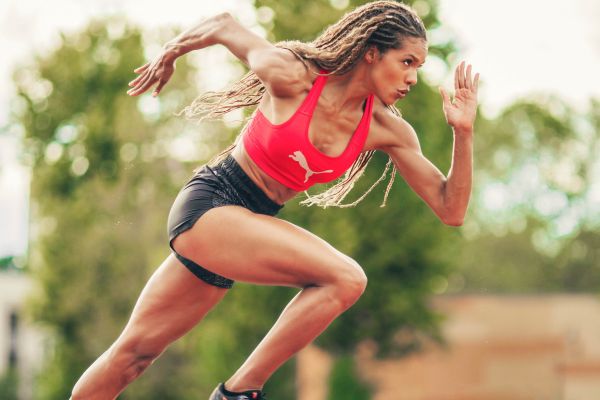Sports Medicine Doctor in Algonquin, IL
Achieve Faster Recovery and Better Performance
Participating in sports and health are intricately linked. Although some health benefits will vary from one sport to another, all offer a few distinct ones. Sports help keep you active and social. They also help you maintain a healthy weight and strong muscles. Unfortunately, accidents sometimes occur during sports that can hinder your performance. When this happens, you need to see a chiropractic sports medicine doctor.
Algonquin Chiropractic Center has provided the Chicagoland region with gentle, safe, effective chiropractic treatments for over two decades. In addition to being a Doctor of Chiropractic, Dr. Galante is also a Certified Chiropractic Sports Physician (CCSP). This means he’s well-equipped not only to reduce your pain from sports injuries but also to help you reach optimal bodily functioning for athletic performance and overall health. Dr. Galante even has programs to PREVENT injuries, where he treats athletes BEFORE they have any symptoms.

What Is a Certified Chiropractic Sports Physician?
Certified Sports Chiropractors make up the top tier in the chiropractic profession. They have specialized knowledge of sports injuries, physical fitness and bodily movement. They apply their advanced understanding of musculoskeletal function and athletic training to help you achieve total body wellness and peak athletic performance.
Earning this certification requires at least 100 hours of postdoctoral education in specialized sports medicine topics, followed by an exam with the American Chiropractic Board of Sports Physicians. Accredited chiropractic colleges teach the courses, and the program is accredited by the National Commission for Certifying Agencies, an organization that ensures that certification programs adhere to modern industry standards.
So, what does this certification equip Dr. Galante to handle?
Examples of some of the sports-related injuries we treat include:
- ACL sprains
- Ankle sprains
- Concussions
- Contusions
- Ligament sprains
- Muscle cramps
- Muscle strains
- Shin splints
- Spinal stress fractures
- Neck and lower back pain
- Shoulder and rotator cuff injuries
- Knee pain
Looking To Schedule Your First Chiropractic Visit?
Whether you are experiencing low back pain, tingling in the feet or regular headaches, Dr. Galante can help you find relief!
How Chiropractic Sports Medicine Works
At Algonquin Chiropractic Center, we want to make your experience as stress-free as possible. That’s why our sports injury doctor follows a simple, proven process to diagnose and treat your issues. We follow the same process for our pediatric sports medicine patients as we do for adults! Here’s what you can expect when you use us for your chiropractic sports medicine needs:
1. Thorough Consultation
At your first appointment, Dr. Galante will discuss your concerns, injury, medical history and athletic goals. A series of non-invasive tests will be conducted to get to the root of any issues. Sometimes, diagnostic imaging is needed to accurately pinpoint the root cause of your injury.
2. Custom Treatment Plan
Dr. Galante will create a custom treatment plan based on his findings and your specific goals. This plan will address concerns and incorporate preventative services to reduce future issues. Your plan may include chiropractic adjustments, physical therapy, interferential current and more.
3. Holistic Whole-Body Care
You’ll receive gentle, holistic chiropractic sports medicine care based on your customized treatment plan. Unlike other methods, care will focus on your whole body, not just your injury. This plan can be modified as healing progresses to continue best meeting your goals.
How Does Seeing a CCSP Benefit Athletes and Non-Athletes?
Chiropractic sports medicine is so effective that many of the world’s most famous athletes from various sports use chiropractic care to remain in optimal shape. From golf to boxing and basketball to football, here are a few of the most notable professional athletes using chiropractic care:
- Arnold Schwarzenegger: Actor and bodybuilder known worldwide for his roles in high-profile action movies.
- Michael Jordan: The NBA has officially stated that Michael Jordan is the greatest basketball player ever.
- Jerry Rice: Widely considered one of the best wide receivers in NFL history – and the one with the longest career.
- Tiger Woods: Widely regarded as one of the greatest golfers of all time.
- Joe Montana: Regarded by many as one of the greatest quarterbacks to ever play in the NFL.
- Wade Boggs: Baseball player who earned a spot in the National Baseball Hall of Fame for hitting 118 home runs.
- Evander Holyfield: Currently the only boxer in history to win the undisputed championship in two weight classes.
- Tom Brady: Former quarterback who won seven Super Bowl rings during his 23-year career.
- Cristiano Ronaldo: Soccer player who became the first professional athlete to surpass $1 billion in career earnings in 2020.
While patients often sustain injuries during sports, athletes aren’t the only ones who benefit from seeing a certified sports chiropractor.
Chiropractic Sports Medicine Benefits
Whether you’re a weekend warrior, high school athlete or just enjoy throwing the ball with the kids in the evening, you can reap the numerous benefits of chiropractic care. A few of the most significant benefits include:
Faster
Recovery

Chiropractic sports medicine helps your body naturally heal from musculoskeletal injuries like sprains and strains. It also provides relief for sore, aching muscles after intense workouts. With a faster recovery, you can get back to your sport sooner.
Personalized Treatments

At Algonquin Chiropractic Center, we know there’s no one-size-fits-all route to injury recovery or performance enhancement. That’s why here, you’ll receive a personalized treatment plan that caters to your unique needs, issues and athletic goals.
Enhanced
Performance

To perform your best in any athletic endeavor, you must be strong, flexible and at your absolute healthiest. We can assist you in enhancing your performance through chiropractic modalities, nutritional counseling and physical therapy.
Holistic
Approach

You don’t need to lose all your hard-earned gains with downtime due to risky surgeries and potentially addictive pain medications. Instead, a holistic approach ensures you keep your body moving in a safe way geared towards healing.
Frequently Asked Questions
Is chiropractic sports medicine safe?
Yes, chiropractic sports medicine is safe! Top-performing athletes like those mentioned above wouldn’t use it if it weren’t. After all, professional athletes rely on their bodies for their livelihood.
Can chiropractic care help me take my athletic performance to the next level?
Yes! When your body functions efficiently, personal bests are made! We don’t just treat sports injuries. We can also help you reach peak performance through various proven holistic treatment modalities.
How much does chiropractic sports medicine cost?
The cost of chiropractic care can vary depending on several factors. The most important considerations are the extent of your treatment plan and whether you have health insurance that covers chiropractic treatments. For the most accurate cost estimate, contact Algonquin Chiropractic Center today.
Does chiropractic care work?
Yes! Chiropractic care has been shown to be effective in treating sports injuries and enhancing athletic performance.
Ready to Reap the Benefits of Chiropractic Sports Medicine?
Chiropractic sports medicine provides numerous benefits for every active individual. Whether you’re a high-performance athlete or a casual enthusiast, see Dr. Galante at Algonquin Chiropractic Center to treat and prevent sports injuries using the latest expert techniques.




